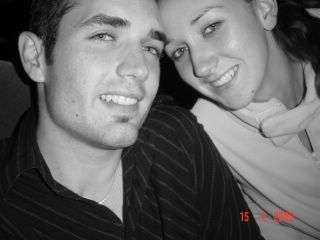Implications for pastoral care of being made in the Image of God
Name: Jared Ambrose
Tutor: Brian Krum
Pastoral Care MM561
30 March 2007
Page 2 Jared Ambrose
Pastoral Care
Image of God Essay
Implications for pastoral care of being made in the Image of God
The question of being made in the Image of God and what are its implications for pastoral care, are sometimes over explained and confusing. The writer will try to simplify their argument and point out the main points they believe affect this area of interest.
Firstly, “What is a person?” One should be careful not to look too deeply and search for the mystical part of one’s inner self. One needs to go deeper into the Word to find out who is God and what was his purpose for creating us. How he created us is also very important.
Three major views have risen to the surface to formulate a definition of God.
•The Substantive View views the image as a definite characteristic or quality within humans. This could be physical, psychological or spiritual. ⁴
•The Relational View affirms that only those who have faith in Christ fully possess the image of God. ⁴
•The Functional View considers what man does, i.e., man’s God-Given function is to have dominion over the rest of creation⁴
In considering who and what man really is, we are compelled to investigate the Biblical assertion that “God Created man in His own Image, in the image of God he created him; male and female He created them (Gen 1:27).” ¹ Understanding this leads us to the fact that we are created in God’s image. Man in the bible is depicted “not as an evolved animal, but as an uniquely endowed creature specifically distinguished from the lower animal world, and specially related to God by the divinely bestowed image.” ² So we have concluded that we are created in God’s image, but we are not God because, like the animals, we were created. But are we different to the animals in any other way? The creation account indicates that man’s creation consisted of God breathing into his nostrils, and becoming a living soul as a result (Genesis 1:27-28; Psalms 8:5-6). This indicates that Man is created in the image of God but also includes man’s immaterial part. “God is spirit (John 4:24) and so consequently the image of God finds expression in man’s spirituality.” ³
We should then conclude that a person is created in the image of God but not God; They have has a spiritual side, a soul/spirit (not just a body but a spirit in the body, unlike animals with no spirit just flesh) that God has gifted to man. We should then build that idea in to our Christian walk as Pastoral care facilitators. Trying to walk every day in the Image of Jesus, the Son of God who is the revelation of the Image of God when he was here one earth.
Page 3 Jared Ambrose
Pastoral Care
Image of God Essay
We should remember too that the secular world doesn’t revolve on our ideas as Christians, they look elsewhere to solve their problems. As Christians we should be continually refocusing our attention on God, and in the scripture. In this way we will be able to become more conformed to the image of God.
We should apply this knowledge of God in knowing that all humans were created in the Image of God. We should not treat people differently because of race, colour, accent, gender or personal disability. Everyone is created equally in the sight of God and therefore also in the Image of God.
As Pastoral Care facilitators we should treat everyone with the respect that God gives us. “There is no part of man, not even his body, which is not adorned with some rays of the glory of the image of God.”³ So we should show everyone God’s love. Knowing that the Image of God is universal, all people have points of sensitivity to spiritual things. We should respect these and apply them in everyone we meet, being respectful of their beliefs and to try to show God’s love in the way he showed it when he created you.
Finally we can see that no matter who we are or where we are, we should apply these principles to our daily walk, trying to respect everyone else, no matter what they say or believe. We should respect everyone and love everyone equally. Trying one’s best to show God’s love shining through us from the Image he made us in.
Bibliography
Kypers, W. In Gods Image. Theology 111. 2000
Krum, Brian. Course Notes. Page 1-8.
Erickson, Millard J. Christian Theology, 2d ed. Baker Books, 1983
¹ All references are taken from the New American Standard Bible unless otherwise stated.
²G.C. Berkouwer, Man: The Image of God, Trans. Dirk W. Jellema 1976, 125.
³Berkouwer, 76.
⁴ Kypers, W. In Gods Image. Theology 111. Page 2

Saturday, March 31, 2007
Subscribe to:
Post Comments (Atom)


2 comments:
Nice.
"We should apply this knowledge of God in knowing that all humans were created in the Image of God. We should not treat people differently because of race, colour, accent, gender or personal disability. Everyone is created equally in the sight of God and therefore also in the Image of God."
I'm going to hold you to that! Do you really mean it?
I'm assuming that the bibliographic reference to Theology is a journal. Would you please give the publisher as well? I am writing a dissertation using material related to the image of God and it may be a useful reference. Thanks. Rhys Morgan
Post a Comment